Tom's Hardware Verdict
A high-performance power supply combined with a backplane that allows for shorter cables, an easier installation, and increased airflow.
Pros
- +
Unique design and features
- +
Full power at 47 degrees Celsius
- +
Improved cable management and airflow thanks to the Connect module
- +
Straightforward installation
- +
High performance
- +
Good build quality
- +
Compact dimensions (PSU)
- +
Large amount of provided connectors
- +
10-year warranty
Cons
- -
Noisy
- -
Not so good EMI performance
- -
Lower than 70% efficiency with 2% load
- -
Not compatible with the alternative sleep mode
- -
Small distance between the 4-pin Molex connectors
Why you can trust Tom's Hardware
The Seasonic Connect is a unique product since it is the first desktop power supply to use backplane, which is not only a cable-hub, but also hosts the DC-DC converters that generate the minor rails. Thanks to the Connect module, installation is easy, and most important of all, the shorter cables increase airflow inside the chassis leading to lower operating temperatures. Currently, there are no similar offerings, not only from the competition but from Seasonic as well. This product is the first of its kind, and we are expecting more Connect models in the near future.
Editor's Note (4/26): Seasonic informed us that will look into the noise and EMI cons that we highlighted in the review. We will update if a solution is found.
It was high-time for a change in the PSU market, where things don't move so fast. Seasonic thought that it would be better, for cable management purposes, if it broke down the PSU into two parts: one is the main power supply generating +12V, -12V and 5VSB and the second part is a cable-hub backplane, which is mounted on the chassis through strong magnets and it is completely hidden behind the mainboard's tray. Those two parts are connected through a thick cable, which transfers the afore-mentioned rails to the Connect module. The latter passes through these three rails to the system, and it also includes two DC-DC converters, which generate the minor rails (5V and 3.3V). By moving the DC-DC converters to the Connect module, you increase efficiency and allow for a better airflow inside the PSU's main body. Now, what about the cooling of the DC-DC converters. Well, modern systems don't heavily utilize those two rails, so the thermal loads remain low. On top of that, Seasonic uses a heat sink that's large enough to do a pretty good job.

Product Photos








If you don't take into account the single cable that connects the PSU to the Connect module, you can state that this is a fully modular PSU with ultra-short cables, thanks to the Connect technology, which takes away the need for long cables. By shortening the cables, you have two significant advantages: lower voltage drops and higher efficiency. The problem is that you add a modular connection, but if you use a short enough main cable to link the PSU to the Connect module with thick wires, this is not a significant issue.

Connect Photos
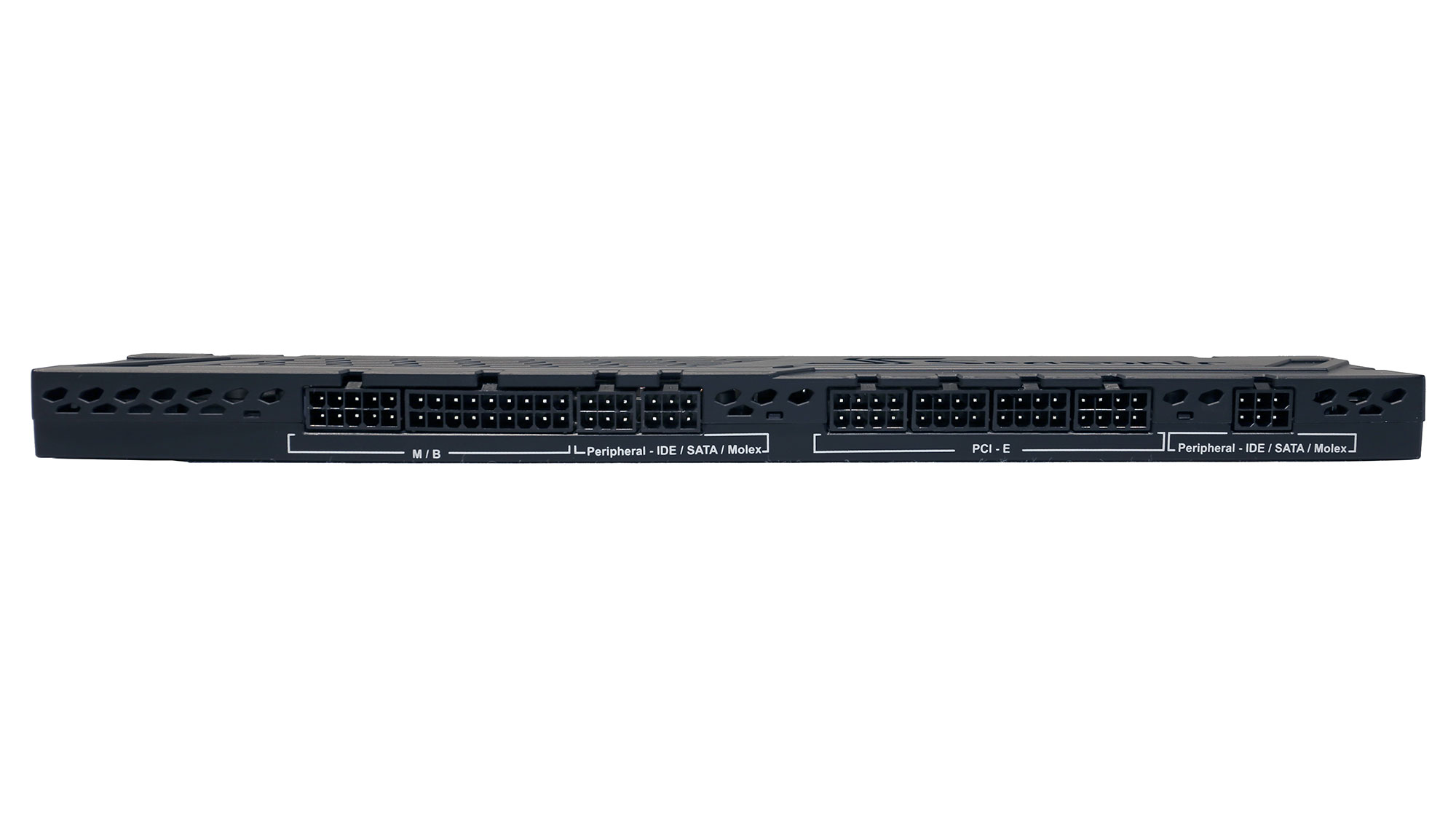
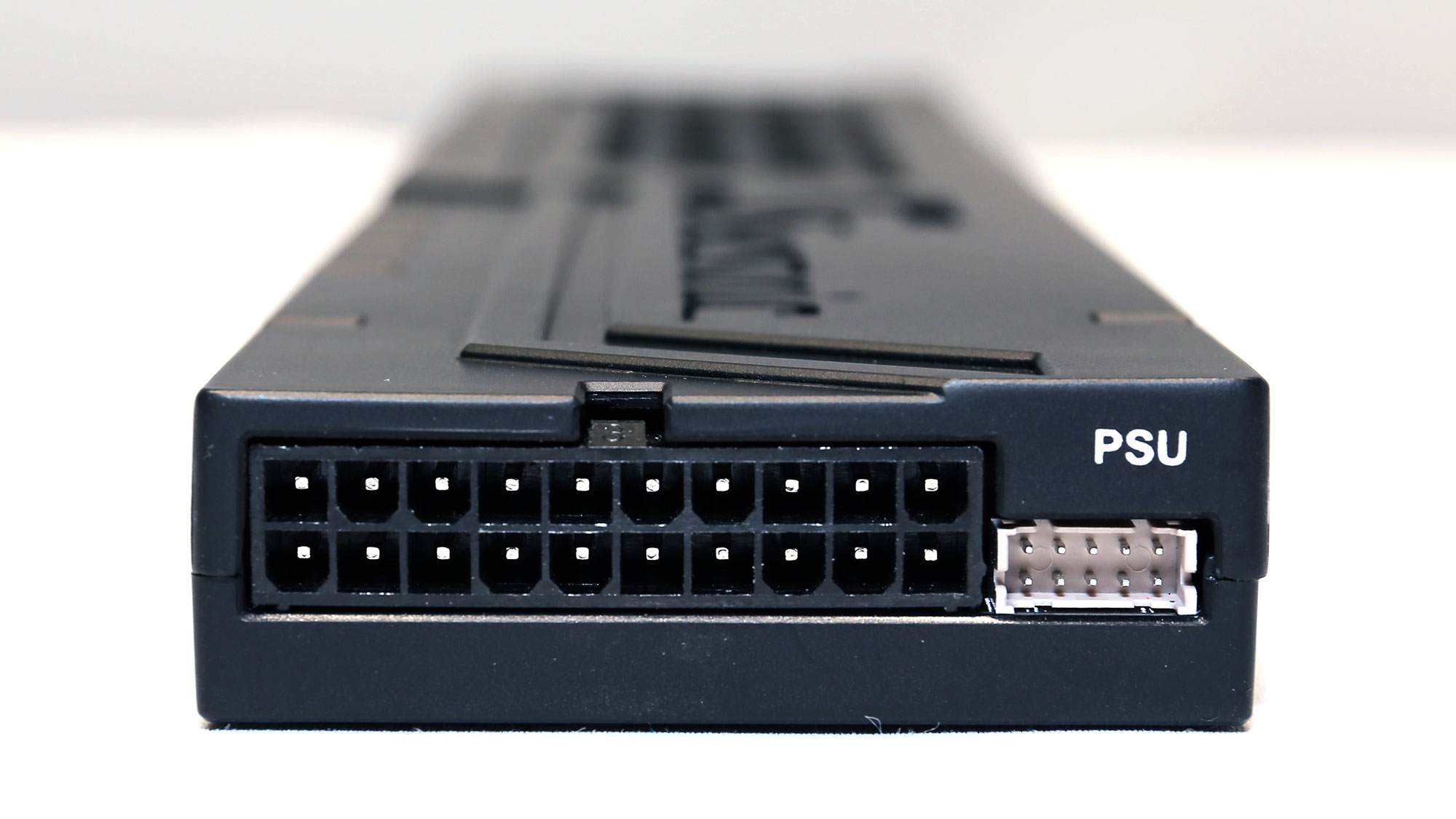

We are a bit skeptical about the lack of cooling on the DC-DC converters that are installed into the Connect module, but those won't be stressed by the majority of modern systems. Moreover, if there were any reliability issues, Seasonic wouldn't provide a ten-year warranty to this product. Time will tell whether the lack of active cooling in the Connect will be an issue for some users that might load more than the typical minor rails.

Installation Photos





The installation of the Connect module is straightforward, as long as there is enough space behind the mainboard tray, and the case is large enough to accommodate it, which won't be a problem for the majority of midi tower cases.
With the provided magnets, you can quickly hook up the backplane in any place that allows for all cables to reach the corresponding sockets. It didn't take us long to install the PSU and its backplane into a Phanteks Evolv X case, which offers ample space, but it doesn't have much clearance behind the motherboard's tray. The backplane's height is 21mm, and the clearance in the Evolv X is close to that.
Get Tom's Hardware's best news and in-depth reviews, straight to your inbox.
We had to remove both hinged metal cable covers that this case has and several built-in velcro straps to mount the Connect module. The glass panel on this side allows for a nice view of the Connect module.
Specifications
| Manufacturer (OEM) | Seasonic |
| Max. DC Output | 750W |
| Efficiency | 80 PLUS Gold, ETA-A (88-91%) |
| Noise | LAMBDA-S+ (35-40 dB[A]) |
| Modular | ✓ (With Seasonic Connect) |
| Intel C6/C7 Power State Support | ✓ |
| Operating Temperature (Continuous Full Load) | 0 - 40°C |
| Over Voltage Protection | ✓ |
| Under Voltage Protection | ✓ |
| Over Power Protection | ✓ |
| Over Current (+12V) Protection | ✓ |
| Over Temperature Protection | ✓ |
| Short Circuit Protection | ✓ |
| Surge Protection | ✓ |
| Inrush Current Protection | ✓ |
| Fan Failure Protection | ✗ |
| No Load Operation | ✓ |
| Cooling | 135mm Fluid Dynamic Bearing Fan (HA13525H12F-Z) |
| Semi-Passive Operation | ✓ (selectable) |
| Dimensions (W x H x D) | 150 x 85 x 140mm |
| Weight | 1.61 kg (3.55 lb) |
| Form Factor | ATX12V v2.4, EPS 2.92 |
| Warranty | 10 Years |
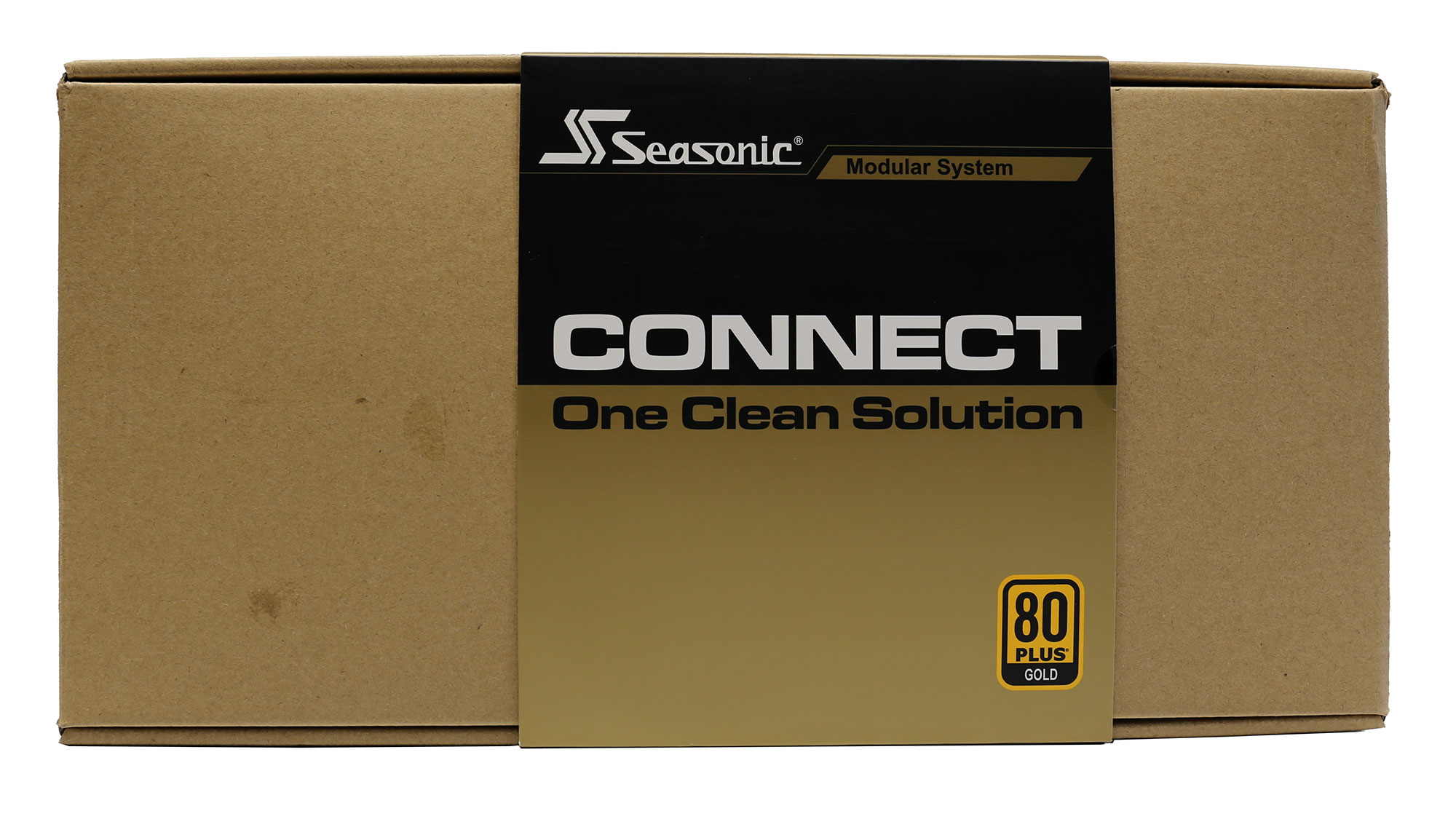
Box Photos
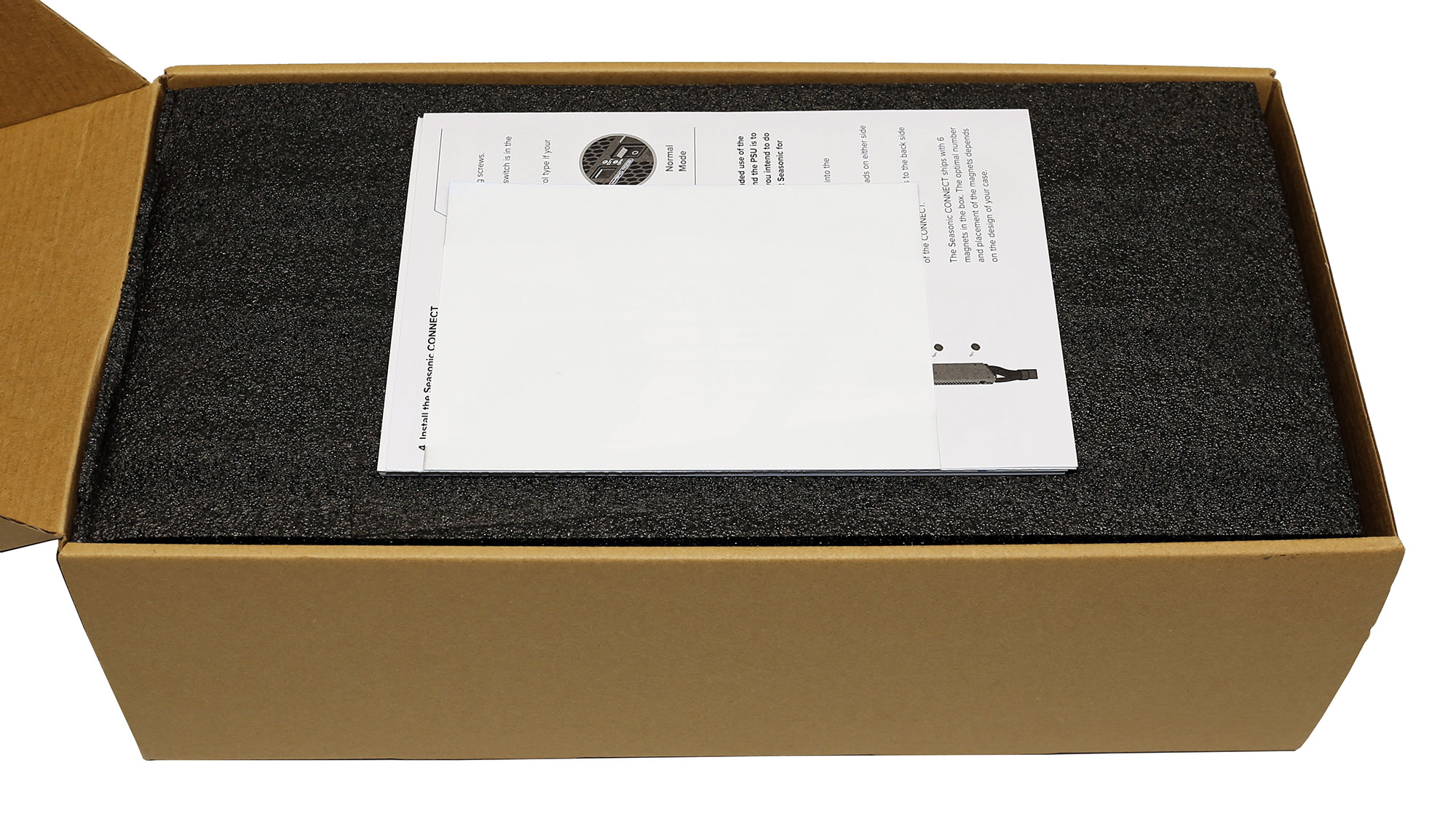




Power Specifications
| Rail | 3.3V | 5V | 12V | 5VSB | -12V | |
|---|---|---|---|---|---|---|
| Max. Power | Amps | 20 | 20 | 62 | 3 | 0.3 |
| Watts | 100 | 744 | 15 | 3.6 | ||
| Total Max. Power (W) | 750 |
Cables & Connectors
| Native Cables | ||||
| Description | Cable Count | Connector Count (Total) | Gauge | In Cable Caps |
| Main connector 20-pin and 10-pin sense (220mm) | 1 | 1 | 16-24AWG | No |
| Modular Cables | ||||
| Description | Cable Count | Connector Count (Total) | Gauge | Gauge |
| ATX connector 20+4 pin (210mm) | 1 | 1 | 18AWG | No |
| 4+4 pin EPS12V (240mm) | 2 | 2 | 16AWG | No |
| 6+2 pin PCIe (280mm) | 2 | 2 | 16-18AWG | No |
| 6+2 pin PCIe (320mm) | 2 | 2 | 16-18AWG | No |
| SATA (300mm+70mm+70mm+70mm) | 1 | 4 | 18AWG | No |
| SATA (200mm+40mm) | 1 | 2 | 18AWG | No |
| SATA (120mm+110mm) | 1 | 2 | 18AWG | No |
| 4-pin Molex (450mm+120mm+120mm) | 1 | 3 | 18AWG | No |
| 4-pin Molex to SATA 3.3V Adapter (150mm+150mm) | 1 | 2 | 18AWG | No |
| AC Power Cord (1380mm) - C13 coupler | 1 | 1 | 18AWG | - |
The main fixed cable, which connects the PSU with the backplane, looks short at 220mm, but there is no need for a longer cable, even with large chassis. This cable could be modular as well, but Seasonic decided to make it modular for lower voltage drops since, through this cable, the PSU's entire output has to pass through, under full load scenarios.
The modular cables are short, but this is not a problem since the backplane is close to all parts that feeds with power. The number of connectors is satisfactory, and our only objection is the short distance between the 4-pin Molex connectors, which is an issue for many PSUs nowadays.

Cable Photos
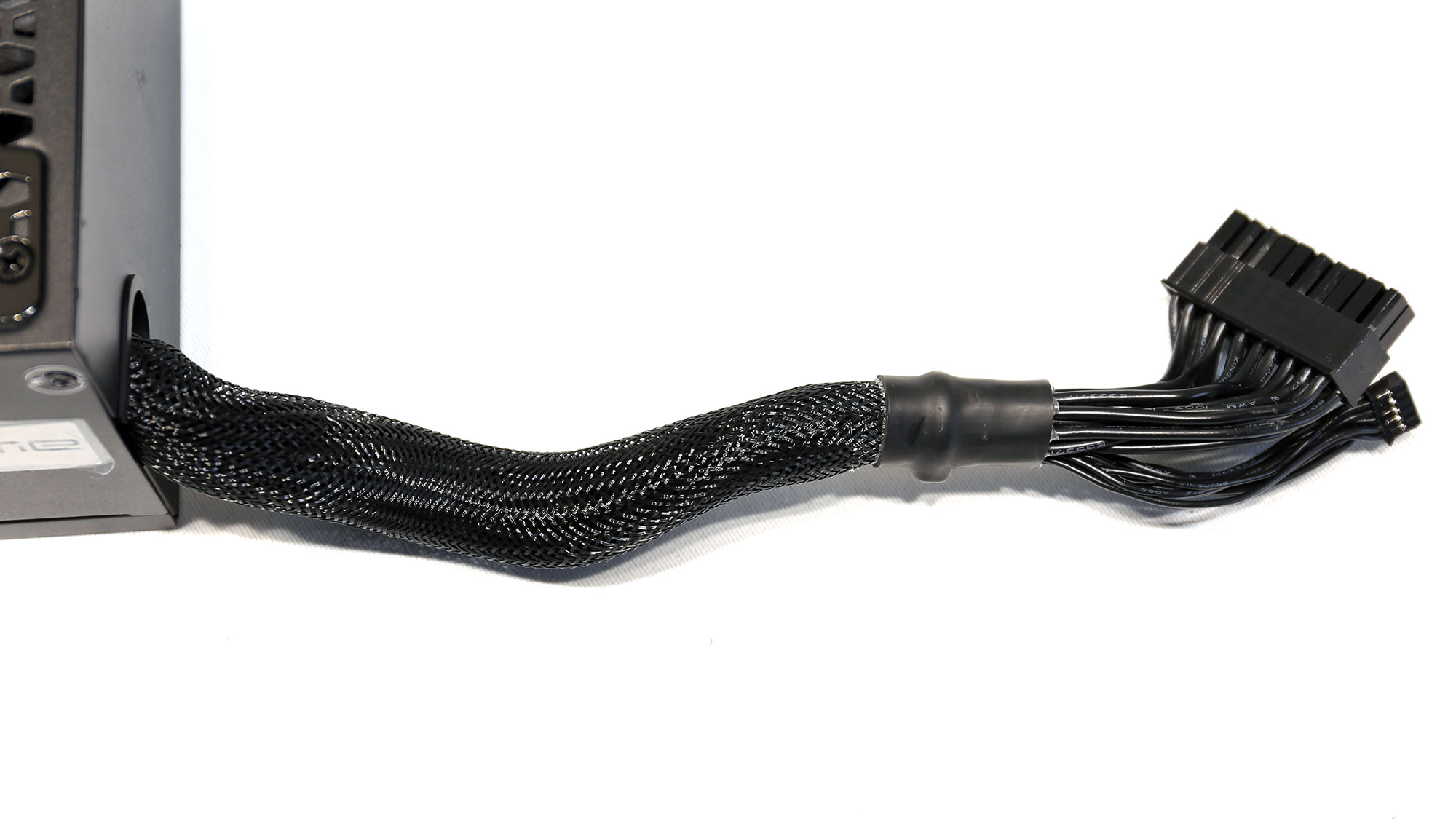



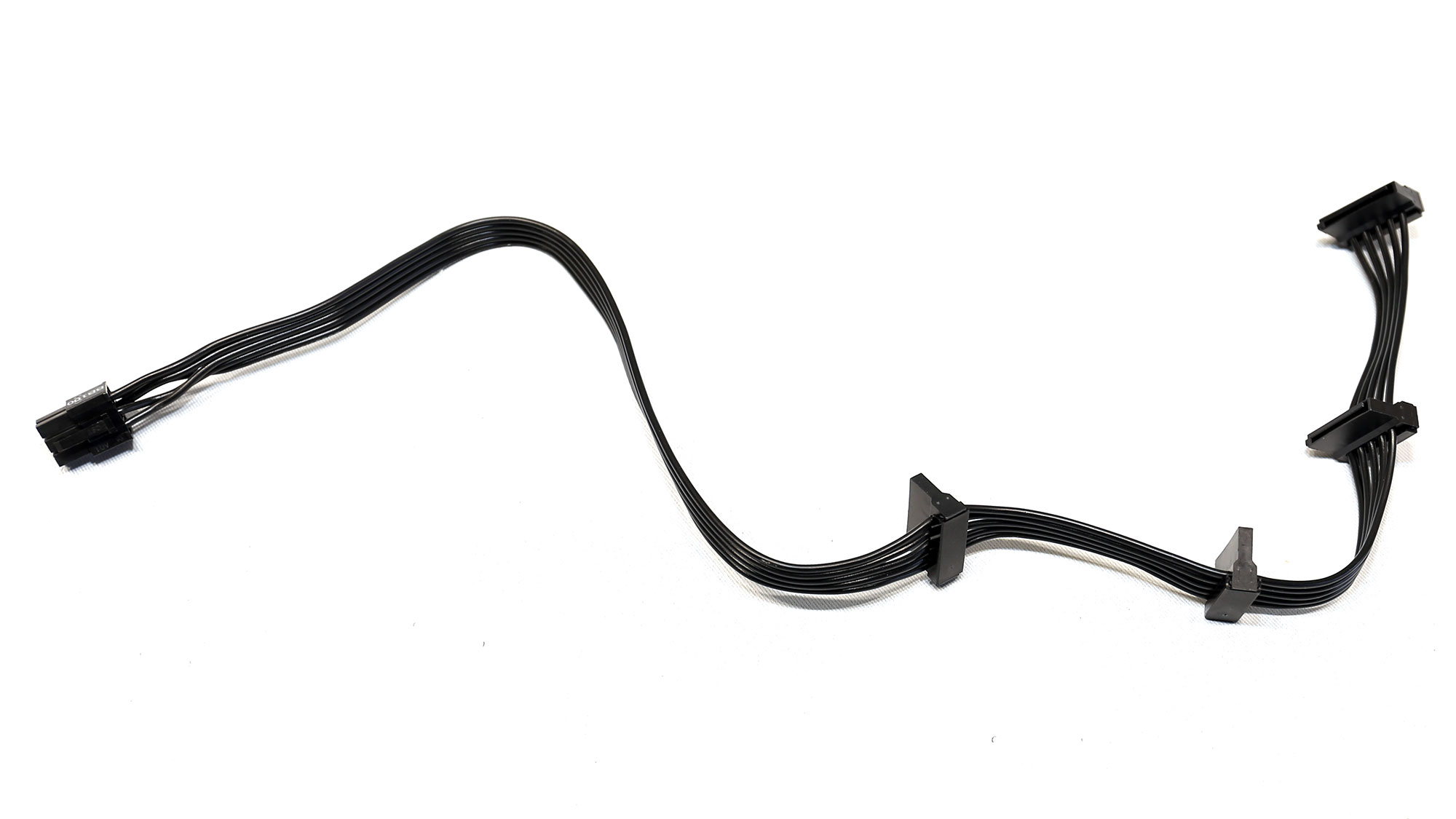





Component Analysis
We strongly encourage you to have a look at our PSUs 101 article, which provides valuable information about PSUs and their operation, allowing you to better understand the components we're about to discuss.
| General Data | - |
| Manufacturer (OEM) | Seasonic |
| PCB Type | Double Sided |
| Primary Side | - |
| Transient Filter | 4x Y caps, 2x X caps, 2x CM chokes, 1x MOV, 1x Discharge IC |
| Inrush Protection | NTC Thermistor (MF72 5D-20L) & Relay |
| Bridge Rectifier(s) | 2x GBU1508 (800V, 15A @ 100°C) |
| APFC MOSFETs | 2x Infineon IPA50R190CE (550V, 15.7A @ 100°C, 0.19Ohm) |
| APFC Boost Diode | 1x STMicroelectronics STTH8S06D (600V, 8A @ 25°C) |
| Hold-up Cap(s) | 1x Hitachi (400V, 820uF, 2,000h @ 105°C, HU) |
| Main Switchers | 4x Great Power GPT10N50AD (500V, 9.7A, 0.7Ohm) |
| APFC Controller | Champion CM6500UNX |
| Resonant Controller | Champion CM6901T6X |
| Topology |
Primary side: Full-Bridge & LLC converter Secondary side: Synchronous Rectification & DC-DC converters |
| Secondary Side | - |
| +12V MOSFETs | 4x Nexperia PSMN2R6-40YS (40V, 100A @ 100°C, 5.3mOhm @ 175°C) |
| 5V & 3.3V | DC-DC Converters: 6x Nexperia PSMN4R0-30YLD (30V, 67A @ 100°C, 6.6mOhm @ 150°C) PWM Controllers: ANPEC APW7159C |
| Filtering Capacitors |
Electrolytic: 7x Nippon Chemi-Con (4-10,000h @ 105°C, KY), 4x Nippon Chemi-Con (105°C, W), 2x Nippon Chemi-Con (1-5,000h @ 105°C, KZE) |
| Supervisor IC | Weltrend WT7527V (OCP, OVP, UVP, SCP, PG) |
| Fan Model | Hong Hua HA13525H12F-Z (135mm, 12V, 0.50A, 2,000rpm, Fluid Dynamic Bearing Fan) |
| 5VSB Circuit | - |
| Rectifier | 1x MCC MBR1045ULPS SBR (45V, 10A @ 90°C) |
| Standby PWM Controller | Excelliance MOS Corp EM8569 |

Overall Photos



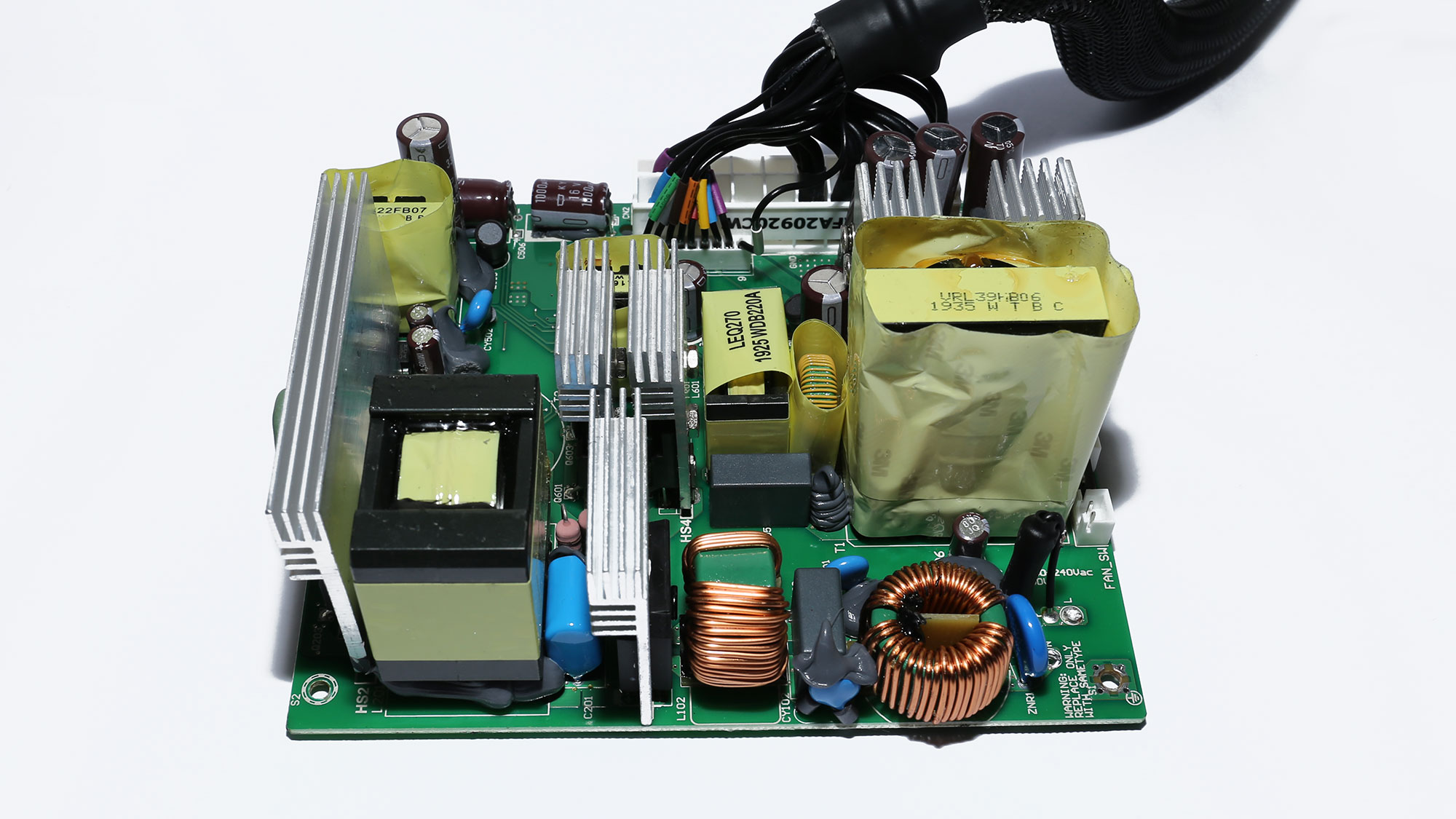
Seasonic mentions in the product's page that a model of its high-end Prime line, the SSR-750GD2, is combined with the Connect module. Nonetheless, this specific Prime model uses a design that is identical to Seasonic's Focus line, with the significant difference being the use of a larger, 135mm, fan. The bulk cap is also larger.
On the primary side, we meet a full-bridge topology and an LLC resonant converter, for increased efficiency. The main PCB lacks a modular panel and the DC-DC converters that generate the minor rails, so there is lots of space among its components, which allows for increased airflow. The converters mentioned above are on the Connect module.

Transient filter




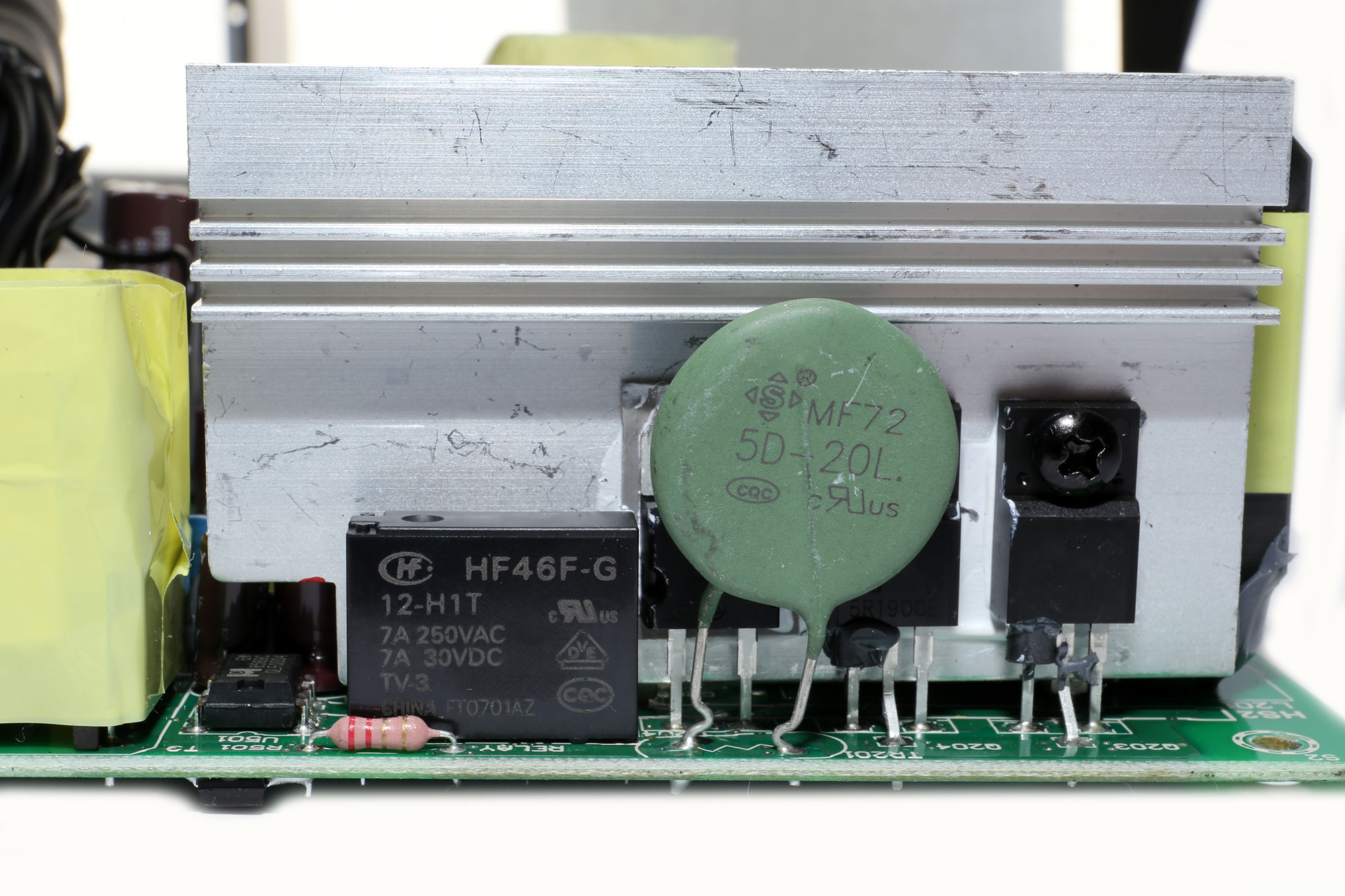
The transient filter has all the necessary components, but it doesn't perform so well, according to the results that we got from the EMC pre-compliance testing. For the inrush and surge protection, Seasonic used an NTC thermistor along with a bypass relay and an MOV.

The pair of bridge rectifiers can handle up to 30 Amps of current, so it is quite powerful for a 750W power supply.

APFC converter

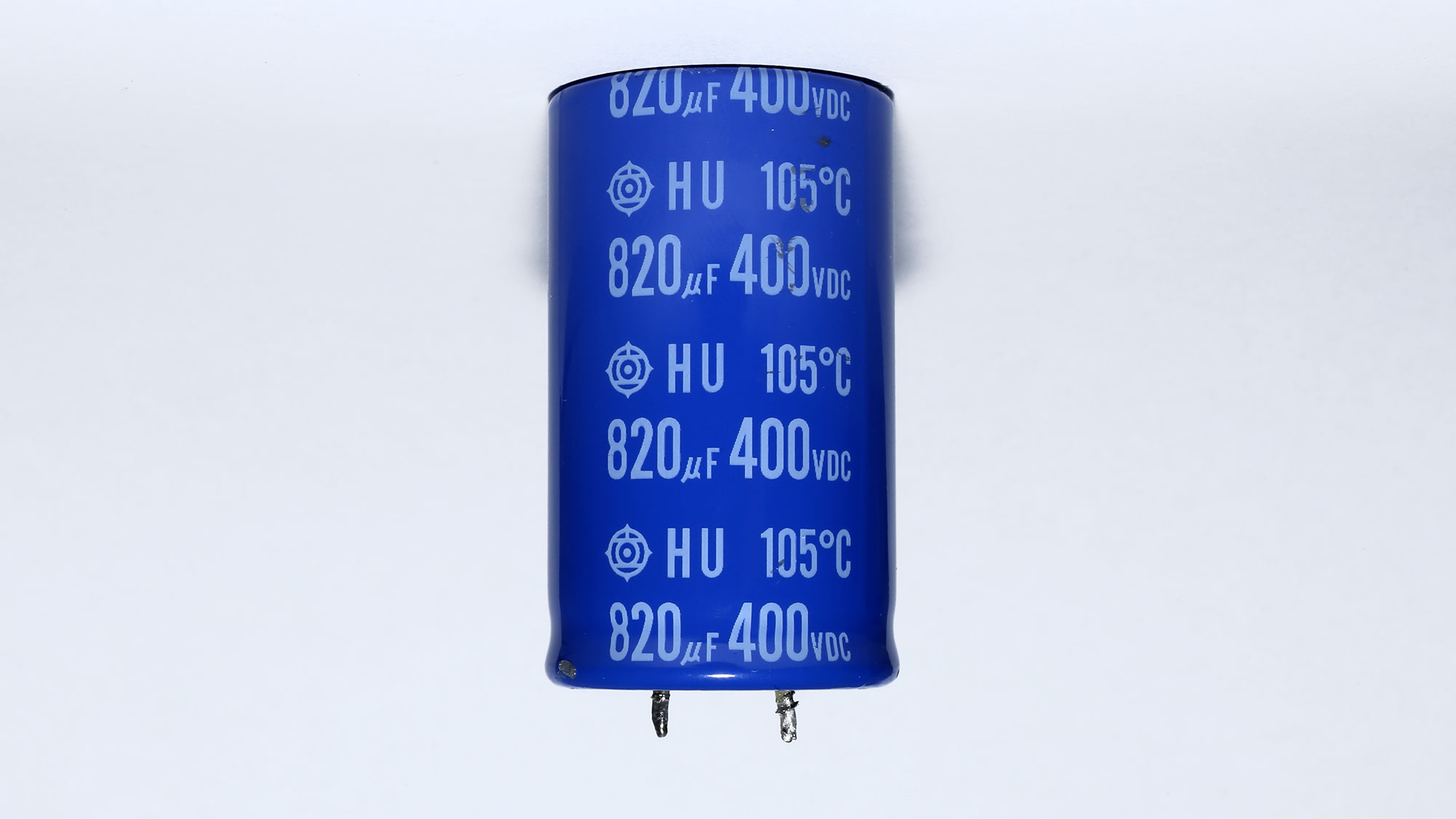
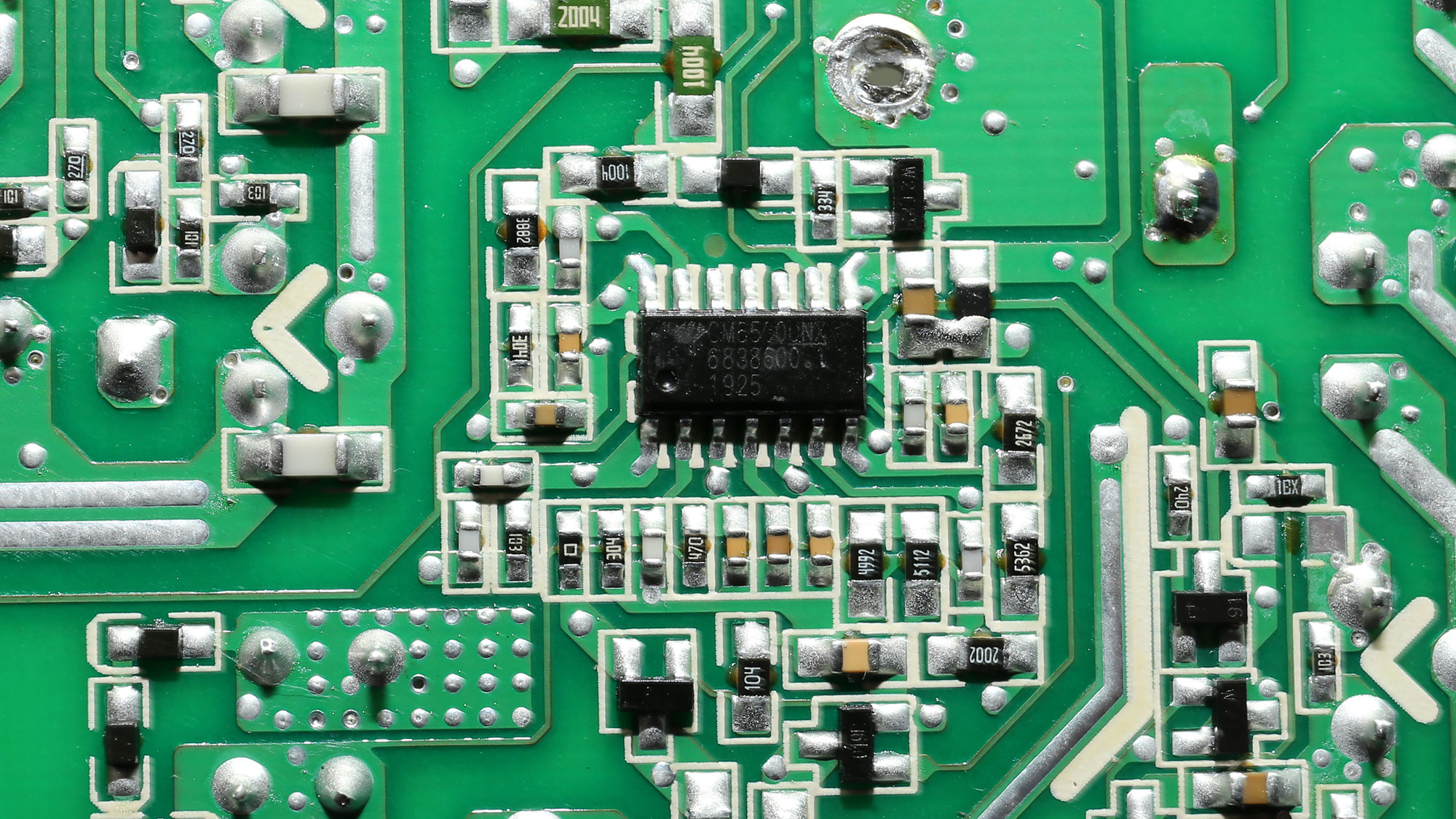
The APFC converter uses Infineon FETs and a high capacity bulk, which is provided by Hitachi.

Main FETs and primary transformer



The main FETs are installed into a full-bridge topology, and as usual, an LLC resonant converter helps in lower the switching losses.

12V FETs

Four Nexperia FETs, installed on the solder side of the main PCB, handle the +12V rails.

Filtering caps

Besides electrolytic caps, which are provided by Chemi-Con, there is also a high number of polymer caps.
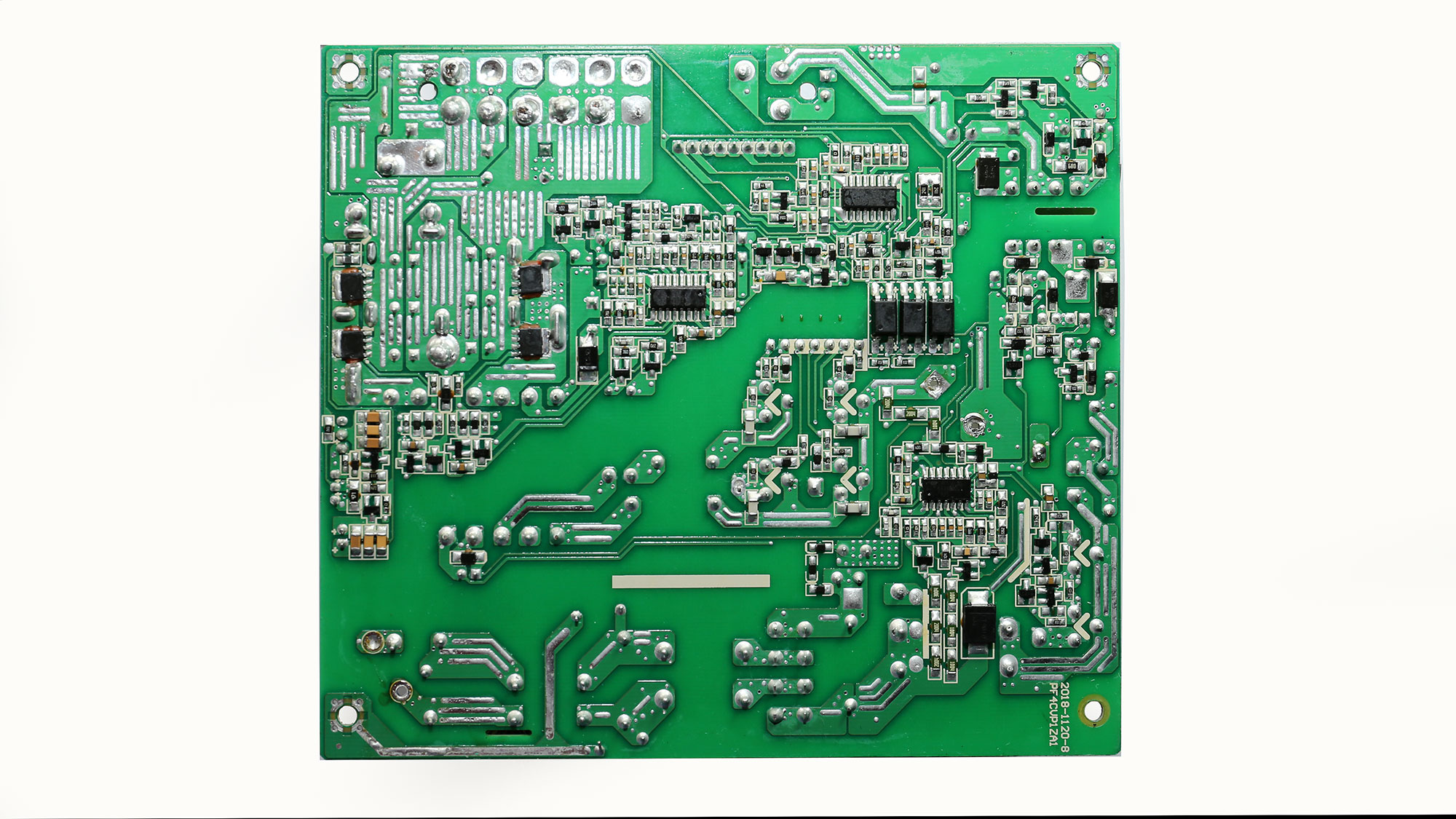
Soldering quality


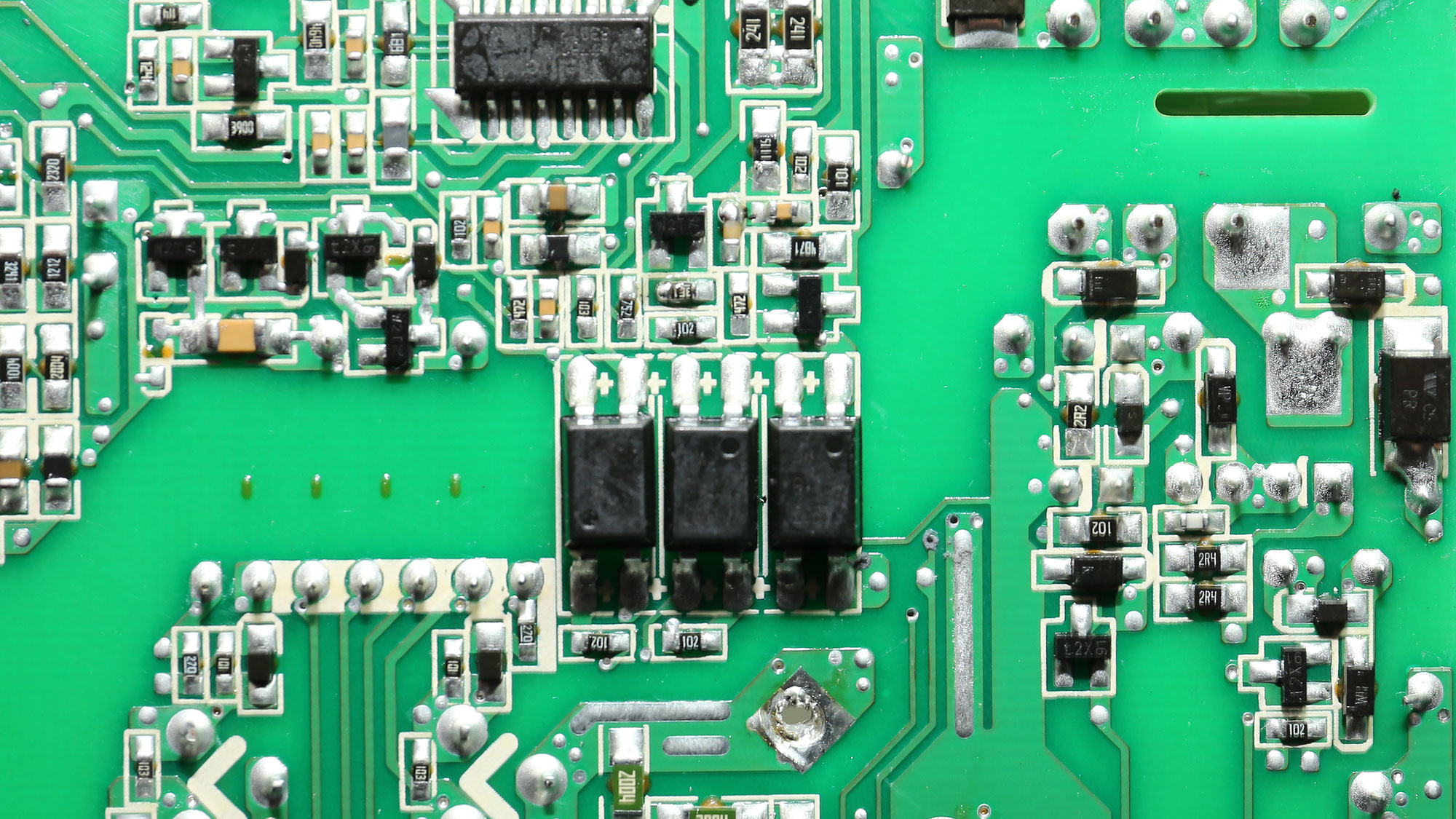

The soldering quality is good enough. On this side of the PCB, you will also find the supervisor IC.

Cooling fan
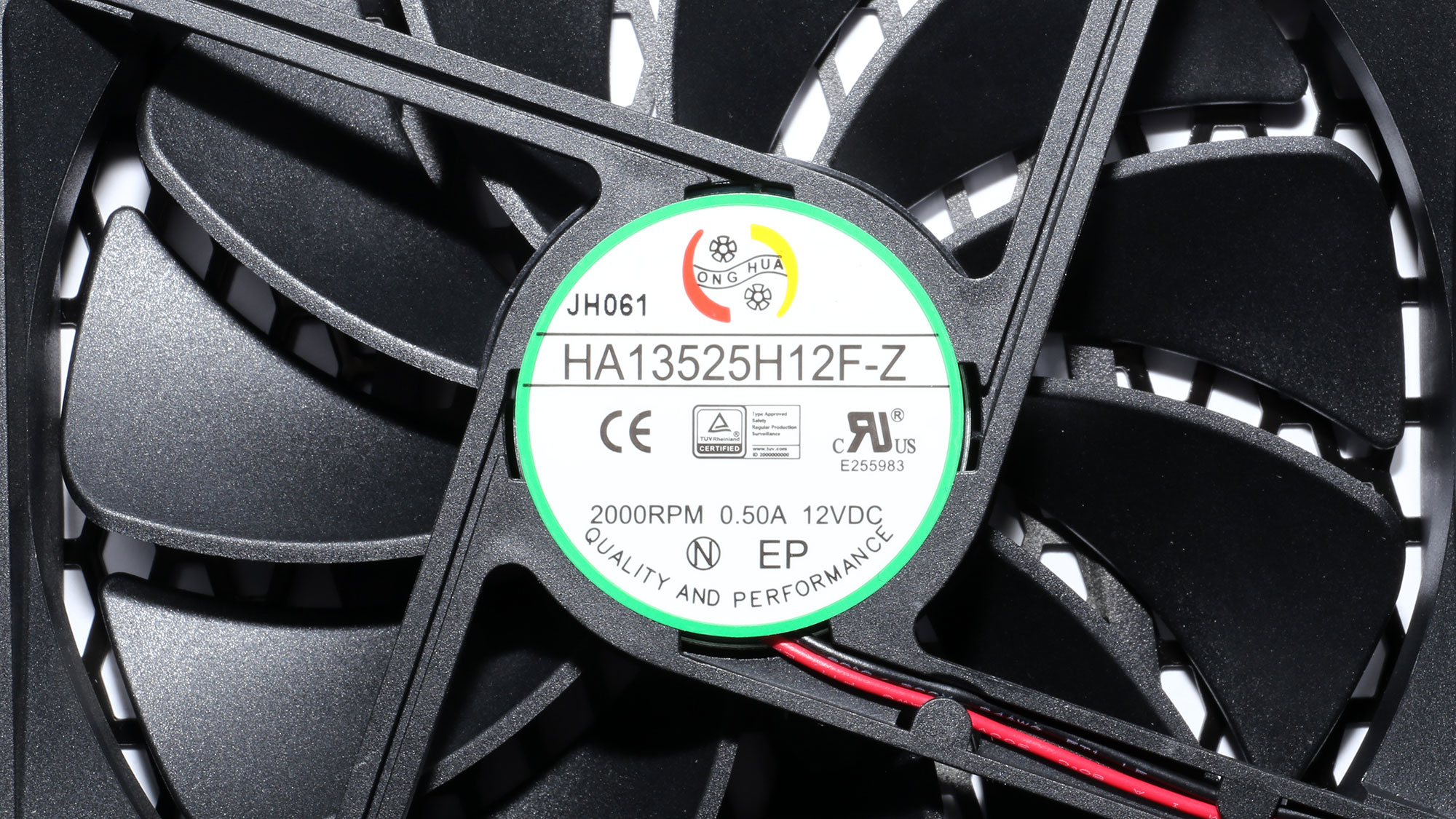
The cooling fan measures 135mm across and uses a fluid dynamic bearing.

Connect Module






We also took apart the Connect module. Its build quality is good, and there is a heat sink on top of the VRM's, which hosts a thermistor. The latter provides temperature data to the over-temperature protection circuit.
MORE: Best Power Supplies
MORE: How We Test Power Supplies
MORE: All Power Supply Content
Current page: Specifications and Part Analysis
Next Page Load Regulation, Hold-Up Time, Inrush Current, Efficiency and Noise
Aris Mpitziopoulos is a contributing editor at Tom's Hardware, covering PSUs.